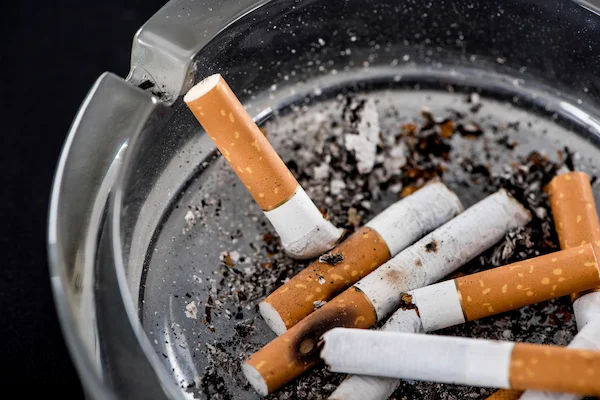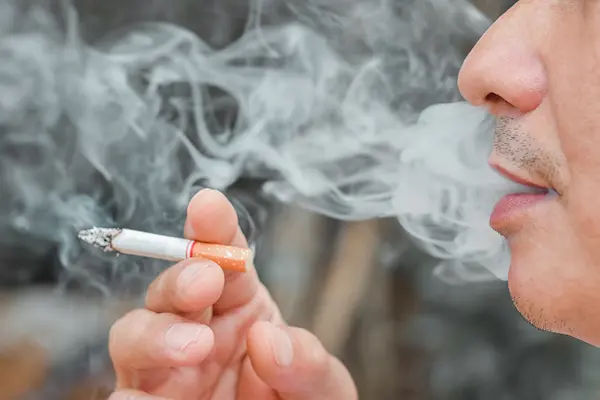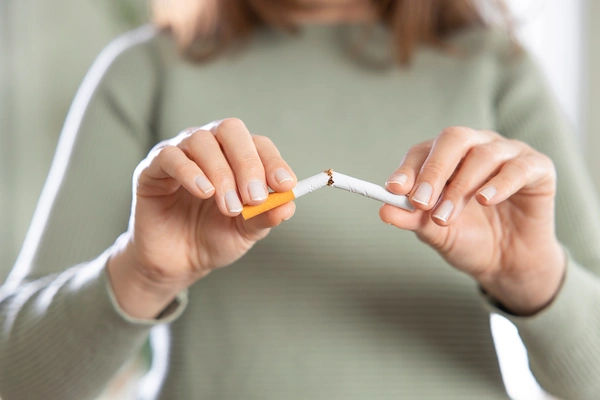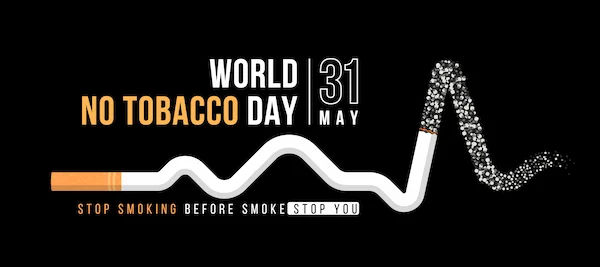Guide to Reasons Why Smoking Bad Your Lungs
Understand the devastating effects of smoking on your lungs. Learn how the chemicals in cigarettes cause irreparable damage, leading to diseases like COPD, emphysema, and lung cancer.

Written by Dr. Rohinipriyanka Pondugula
Reviewed by Dr. D Bhanu Prakash MBBS, AFIH, Advanced certificate in critical care medicine, Fellowship in critical care medicine
Last updated on 24th Sep, 2025

Introduction
Every breath you take is a vital exchange of life-giving oxygen for waste gases. It’s an effortless process—until it’s not. Smoking systematically sabotages this fundamental function, turning your lungs from efficient organs into damaged, struggling victims. The reasons smoking is profoundly bad for your lungs are not just about a nagging cough; it's a full-scale assault that leads to debilitating diseases and drastically reduces your quality of life. This guide will break down the exact mechanisms of damage, from the toxic chemicals you inhale to the irreversible structural changes, empowering you with the knowledge to protect your most vital asset: your ability to breathe freely.
The Toxic Cocktail: What You're Actually Inhaling
When you light a cigarette, you’re not just inhaling tobacco. You’re breathing in a complex chemical factory of over 7,000 compounds, hundreds of which are toxic and about 70 known to cause cancer. This toxic cocktail is the root cause of all the damage that follows.
Tar: The Sticky Invader That Coats Your Lungs
Tar is the sticky, brown residue that is the primary cause of lung damage from smoking. As you inhale, this substance cools and condenses inside your lungs, coating the delicate lining of your airways and air sacs (alveoli). This coating:
Traps bacteria and viruses, leading to frequent infections.
Irritates lung tissue, causing inflammation and that classic "smoker's cough" as your body tries to expel it.
Contains dozens of carcinogens that directly cause genetic mutations in lung cells, leading to cancer.
Nicotine: The Addictive Agent That Hijacks Your Brain
While nicotine’s most significant harm is its addictive power—keeping you coming back for more damage—it also directly affects your lungs. It causes the blood vessels in your airways to constrict, reducing blood flow and making it harder for your body to deliver immune cells to fight infection and repair damage.
Carbon Monoxide: The Silent Oxygen Thief
This odorless gas binds to hemoglobin in your red blood cells over 200 times more easily than oxygen does. This means that for a smoker, a significant portion of their blood’s oxygen-carrying capacity is taken up by a useless gas. This leads to less oxygen reaching your muscles, brain, and, crucially, your heart and lungs themselves, forcing them to work harder and causing shortness of breath.
Consult Top Specialists
The Direct Assault on Your Lung’s Defense System
Your respiratory system has a brilliant, self-cleaning defense mechanism that smoking completely dismantles.
Paralysis of the Cilia: Your Natural Cleaning Crew
Your airways are lined with tiny, hair-like structures called cilia. Their job is to wave in a coordinated motion, sweeping mucus, dust, and debris up and out of your lungs toward your throat, where it’s swallowed or coughed out. The toxic chemicals in cigarette smoke paralyze and eventually destroy these cilia. With this cleaning crew out of action, harmful particles and toxins sit stagnant in your lungs, leading to inflammation and infection.
Mucus Overproduction: The Recipe for Chronic Cough
In response to the constant irritation, the goblet cells in your airways go into overdrive, producing far more thick, sticky mucus than usual. With the cilia paralyzed, this excess mucus has nowhere to go. It clogs your airways, becoming a breeding ground for bacteria and forcing your body to initiate a violent, persistent cough—known as "smoker's cough"—in a desperate attempt to clear the blockage. This is one of the most common early signs of lung damage from smoking.
Structural Damage: How Smoking Reshapes Your Lungs from the Inside
The constant inflammation and chemical assault lead to permanent, physical changes in the architecture of your lungs.
Destruction of Alveoli: The Point of No Return for Oxygen Exchange
At the very end of your bronchial tubes are millions of tiny, balloon-like air sacs called alveoli. This is where the crucial oxygen exchange happens: oxygen enters your blood, and carbon dioxide leaves it. Smoking causes these delicate, elastic sacs to become inflamed, lose their shape, and eventually rupture. Multiple small sacs merge into large, inefficient ones with less surface area. This condition, called emphysema, means your body can no longer get enough oxygen, leading to constant breathlessness, even at rest.
Loss of Lung Elasticity: Why You Feel Breathless
Healthy lungs are elastic and springy, allowing them to expand and contract easily with each breath. The toxins in smoke cause the airways to lose this elasticity. They become floppy, narrow, and clogged with mucus, making exhalation particularly difficult. Air gets trapped in the lungs, leaving less room for fresh, oxygen-rich air to enter. This is why smokers often have a barrel-shaped chest and struggle to blow out a candle.
From Damage to Disease: The Major Lung Conditions Caused by Smoking
The cumulative damage inevitably progresses into serious, often fatal, diseases.
COPD: The Progressive Thief of Your Breath
Chronic Obstructive Pulmonary Disease (COPD) is an umbrella term for progressive lung diseases—primarily emphysema and chronic bronchitis—that block airflow and make breathing increasingly difficult. It is almost exclusively caused by smoking and is a leading cause of disability and death worldwide. There is no cure, only management to slow its progression.
Emphysema: The Destruction of Air Sacs
As described above, this is the physical destruction of the alveoli, leading to severe shortness of breath.
Chronic Bronchitis: The Perpetual Inflammation
This is diagnosed by a persistent, mucus-producing cough that lasts for at least three months a year for two consecutive years. It involves the constant inflammation and narrowing of the bronchial tubes.
Lung Cancer: The Uncontrolled Cellular Mutiny
The carcinogens in tar cause mutations in the DNA of lung cells. Usually, the body can repair this damage, but the relentless assault from smoking eventually overwhelms these repair mechanisms. Cells begin to multiply uncontrollably, forming tumors that block airways. How does smoking cause lung cancer? It's a direct result of these cumulative genetic injuries. Lung cancer is the leading cause of cancer death globally, and smoking is responsible for about 85% of all cases.
The Domino Effect: How Lung Damage Impacts Your Entire Body
Weakened lungs don't operate in a vacuum. They trigger a domino effect throughout your body:
Heart Strain: Low oxygen levels force your heart to pump harder and faster to circulate what little oxygen is available, leading to high blood pressure, heart disease, and heart attack.
Weakened Immunity: Frequent lung infections can spread or weaken your entire immune system, making you more susceptible to other illnesses.
Physical Inactivity: Breathlessness leads to a more sedentary lifestyle, which increases the risk of obesity, diabetes, and other metabolic conditions.
It's Never Too Late: How Your Lungs Heal After You Quit
The human body has a remarkable capacity to heal. The benefits of quitting smoking for lungs begin almost immediately.
20 minutes after quitting: Your heart rate and blood pressure drop.
12 hours to 2 weeks: The carbon monoxide level in your blood drops to normal. Lung function and circulation improve.
1 to 9 months: The cilia regrow and begin to function again, reducing the risk of infection. Coughing and shortness of breath decrease significantly.
1 year: Your risk of coronary heart disease is cut in half.
10 years: Your risk of dying from lung cancer is about half that of a person who is still smoking.
15 years: Your risk of coronary heart disease is close to that of a non-smoker.
While some damage, like destroyed alveoli, is permanent, quitting stops the progression of the damage and allows your body to heal to its maximum potential. If you're struggling to quit or are experiencing a persistent cough or shortness of breath, consult a doctor online with Apollo24|7 for a personalized cessation plan and lung health assessment.
Conclusion
Understanding the reasons smoking is so bad for your lungs is the first powerful step toward choosing a healthier life. From the toxic chemical assault to the systematic breakdown of your lungs' defenses and structure, the path smoking paves leads directly to debilitating disease. However, this knowledge is also a source of hope. Your body is eager to heal from the moment you put out your last cigarette. The journey to better lung health is challenging, but every hour, day, and week without smoke is a victory your body will thank you for with every deeper, easier breath you take. Choose to quit, and choose to breathe freely.
Consult Top Specialists
Consult Top Specialists

Dr. Rajib Ghose
General Physician/ Internal Medicine Specialist
25 Years • MBBS
East Midnapore
VIVEKANANDA SEBA SADAN, East Midnapore

Dr Divya Lekha Gunta
General Practitioner
10 Years • MBBS, MD (Pathology)
Visakhapatnam
Apollo 24|7 Clinic - Andhra Pradesh, Visakhapatnam

Dr. Leeni Mehta
General Physician/ Internal Medicine Specialist
13 Years • MBBS, MD (Medicine), PGD (Clinical Endocrinology and Diabetes), RCP (UK,lONDON)
Bengaluru
Apollo Medical Center, Marathahalli, Bengaluru
(150+ Patients)

Dr. Sougata Kumar
General Practitioner
8 Years • MBBS
East Midnapore
VIVEKANANDA SEBA SADAN, East Midnapore

Dr. Ahmad Ather Ali
General Physician/ Internal Medicine Specialist
4 Years • MBBS
Manikonda Jagir
Apollo Clinic, Manikonda, Manikonda Jagir
(25+ Patients)
More articles from Smoking Cessation
Frequently Asked Questions
1. What is the difference between healthy lungs and a smoker's lungs?
Healthy lungs are pink, elastic, and clear of debris. A smoker's lungs are blackened or blotchy from tar buildup, often inflamed, scarred, and can have visible tumors. They are less elastic and have destroyed air sacs, making them much less efficient.
2. How long does tar stay in your lungs after quitting?
Your body starts clearing tar immediately after quitting. The most significant clearing happens in the first few months as your cilia recover and begin sweeping the tar out. However, some tar and particles can remain embedded in lung tissue for years.
3. Does vaping damage your lungs like smoking?
While vaping exposes users to fewer toxic chemicals than smoking, it is not safe. E-cigarette aerosol can contain harmful substances like nicotine, ultrafine particles, and flavorings linked to lung disease. It can cause lung inflammation and damage and its long-term effects are still being studied.
4. What are the very first signs of lung damage from smoking?
The earliest signs are often a persistent 'smoker's cough,' increased mucus production, shortness of breath during mild physical activity (like climbing stairs), wheezing, and more frequent chest colds or respiratory infections.
5. Can your lungs fully heal after 10 years of smoking?
While your lungs will never return to the pristine state of a never-smoker, they can experience dramatic healing. Within a year, lung function can significantly improve. After 10 years quit, your risk of lung cancer drops to about half that of a continuing smoker. The body can repair a substantial amount of damage, but some destroyed alveoli are gone forever.




